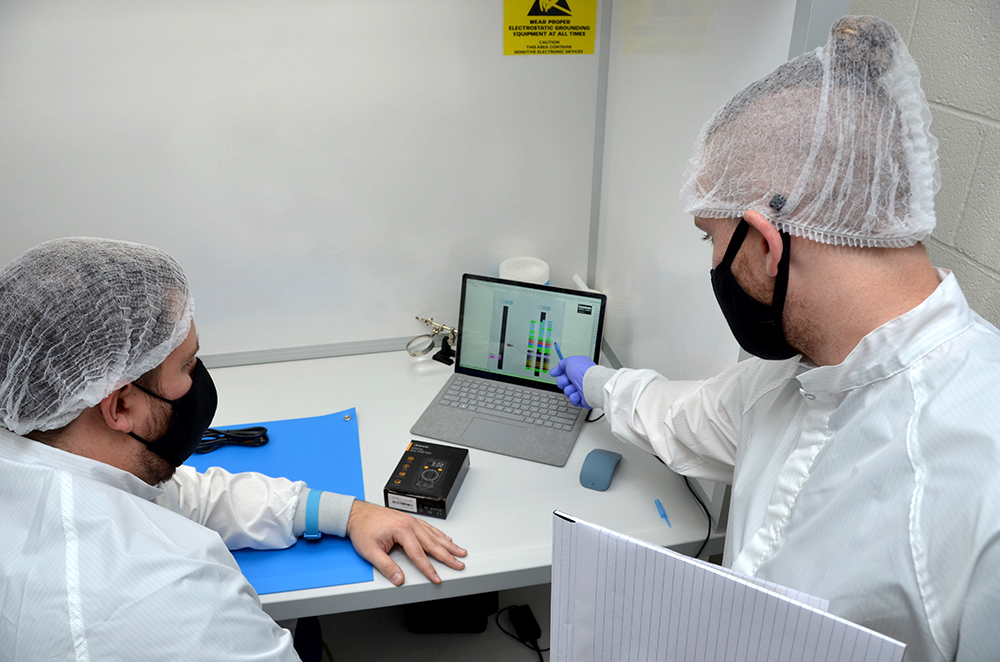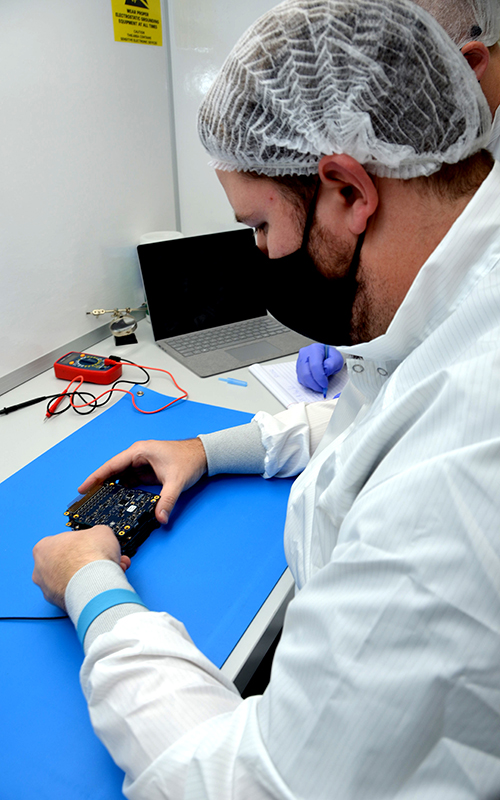Prepare for liftoff: KU Aerospace Engineering finalizing plans to launch CubeSat

LAWRENCE — A group of engineering students at the University of Kansas expects to launch a small satellite, called a CubeSat, aboard a NASA rocket later this year.
CubeSats are tiny “nanosatellites” about the size of a loaf of bread, weighing in around 3 pounds, and are launched under a NASA program that offers educational institutions and nonprofit organizations a chance to share space on its rockets. Members of the “KUbeSat” team expect the university’s first satellite to reach orbit with a launch in June.
 “The goal behind the CubeSat Launch Initiative is they want every single state in the country to launch a satellite,” said Arno Prinsloo, a doctoral student in engineering from Belton, Missouri, who serves as project manager for the effort. “And the weird thing is, Kansas hasn't done that. So we're actually aiming to build the first satellite ever out of Kansas.”
“The goal behind the CubeSat Launch Initiative is they want every single state in the country to launch a satellite,” said Arno Prinsloo, a doctoral student in engineering from Belton, Missouri, who serves as project manager for the effort. “And the weird thing is, Kansas hasn't done that. So we're actually aiming to build the first satellite ever out of Kansas.”
This isn’t KU’s first try at getting a satellite in orbit. Students made the first CubeSat attempt in 2006, with plans that called for the payload to be launched from Kazakhstan aboard a Russian rocket. That launch failed on the way to orbit, however.
This time around, the student engineers had a new advantage. The Hill Space Systems Laboratory in Learned Hall opened in 2019 as a place to do the complicated work of satellite construction. The lab features a 12-by-12-foot “clean room” where students don protective clothing while they build the device; a second room in the same lab is stocked with computer equipment so students can design and test their creations.
“It’s where we do a lot of our work. It’s a definite morale booster. Before we had that lab, we were operating wherever the students could gather. A sense of place is important,” said Mark Ewing, associate professor of aerospace engineering and a team adviser. There are also practical advantages, he said — the lab’s clean room “gives us an added element of assurance we’re not getting dirt and dust in something that’s going to go to space.”
“It’s really important when we're working on the satellite, because any piece of dust that gets in the satellite could short circuit it once it gets up into space,” said Brody Gatza, a junior in aerospace engineering from Olathe who serves as the KUbeSat Club president. “It's just really cool to have a facility like that at KU.”
The KUbeSat project features around 50 students on six different teams, each focusing on a different aspect of the design-build process. The satellite itself features two different instruments — a cosmic ray detector and a pulse generator that will help calibrate the orientation and position of the satellite when it flies over Antarctica. It will also carry a camera.
“We're going to get to take pictures of Lawrence during our flyovers,” Prinsloo said. “Hopefully that coincides with a basketball game or homecoming or something like that. It would be pretty cool to get to see that.”
The work has been challenging and rewarding for the participants.
“The students have done it mostly on their own,” Ewing said. “They became very good at software and integration issues. It’s been remarkable, the number of students involved.”
“It’s really cool to say that I worked on something that is going to be in space before the time I even graduate and go work somewhere,” Gatza said. “That's going to be something great to have on the resume. It's just really cool to me personally, because that's something I've always wanted to do. And I didn't think it would happen this fast.”
Prinsloo, whose family emigrated from South Africa, agreed.
“Having this opportunity as this little farm kid from South Africa or the Midwest, whichever way you prefer, is just amazing,” he said. “I always tell people that I grew up in the United States, and I consider it my home country, but I am still an immigrant, and to be part of what I'm doing now feels like the American dream in a lot of ways.”
There is more to come. KU is already looking ahead to future CubeSat launches — and looking for new ideas for instruments to put aboard its forthcoming satellites.
“We actually already started designing our second satellite just the other day,” Prinsloo said. “The next team is going to take over, and they're going to get the next one up and running.”
Photos: A group of engineering students at the University of Kansas expects to launch a small satellite, called a CubeSat, aboard a NASA rocket in June 2022.